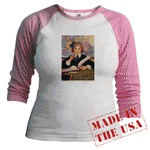| Introduction | Annotated Tales | eBooks | Bookstore | Illustration Gallery | Discussion Board | Blog |
 |
|
|
Diamonds and Toads is one of my personal favorites in the Aarne-Thompson classification of "The Kind and the Unkind Girls," AT-480. According to Peter and Iona Opie, over 1,000 variants of this tale have been discovered in more than twenty countries (Opie 1974). Some of these are listed on the Similar Tales Across Cultures page. Like so many other literary fairy tales, one of the earliest recorded variants of this tale is "The Two Cakes" which can be found in Giambattista Basile's Il Pentamerone (1634). About 60 years later, Charles Perrault included a variant of the tale, "The Fairies" (aka Les Fees), in his Contes de ma mere L'Oye (1695). That same year, Mlle Marie Jeanne L'Heritier de Villandon published a lengthier version titled, "Les Enchantements de L'Eloquence ou les Effets de la Douceur" found in her Oeuvres meslees contenant l'Innocente tromperie. Supposedly the tale was well known in France at this time, but the Opies speculate that she heard the story from Perrault and adapted it according to her own muse (Opie 1974). However, Perrault's version is the one most often known now as "Diamonds and Toads" (or "Toads and Diamonds") and was first translated into English in Robert Samber's Histories, or Tales of Past Times (1729). The ever busy Jacob and Wilhelm Grimm included a variant of the kind and unkind girls as the tale, "Frau Holle," in their collection of German tales. Actually, the Grimms have many tales which carry a similar theme, including "Hans Frank." Yet another variant of the tale has been known for several centuries in England as "The Three Heads in the Well." It first appeared in a chapbook titled, The History of Four Kings, Their Queens and Daughters, Kings of Canterbury, Colchester, Cornwall and Cumberland. Being the Merry Tales of Tom Hodge, And his School-Fellows. The chapbook was published in many editions during the late 1700s. However, a similar tale appears as early as 1595 in George Peele's The Old Wives Tale in which two daughters are sent to fetch the water of life from a well and find heads in the well. The best known version of "The Three Heads in the Well" was published by James Orchard Halliwell in his Popular Rhymes and Nursery Tales (1849). He credits conflicting sources for the tale, but the Opies believe The History of the Four Kings was his true source (Opie 1974). Another French version, "The Young American," was written by Madame de Villeneuve in the 18th century. There are no heads in the well in this version, but a water nymph who rewards a neglected but kind-hearted stepchild after she falls into the well. To read more about the histories of both "Diamonds and Toads" and "The Three Heads in the Well," please see the Opies' introductions to the tales in: Opie, Iona and Peter. The Classic Fairy Tales. New York: Oxford University Press, 1974. |
|
| ©Heidi
Anne Heiner, SurLaLune Fairy Tales E-mail: heidi@surlalunefairytales.com Page created 1/2003; Last updated 3/1/2010 www.surlalunefairytales.com |






